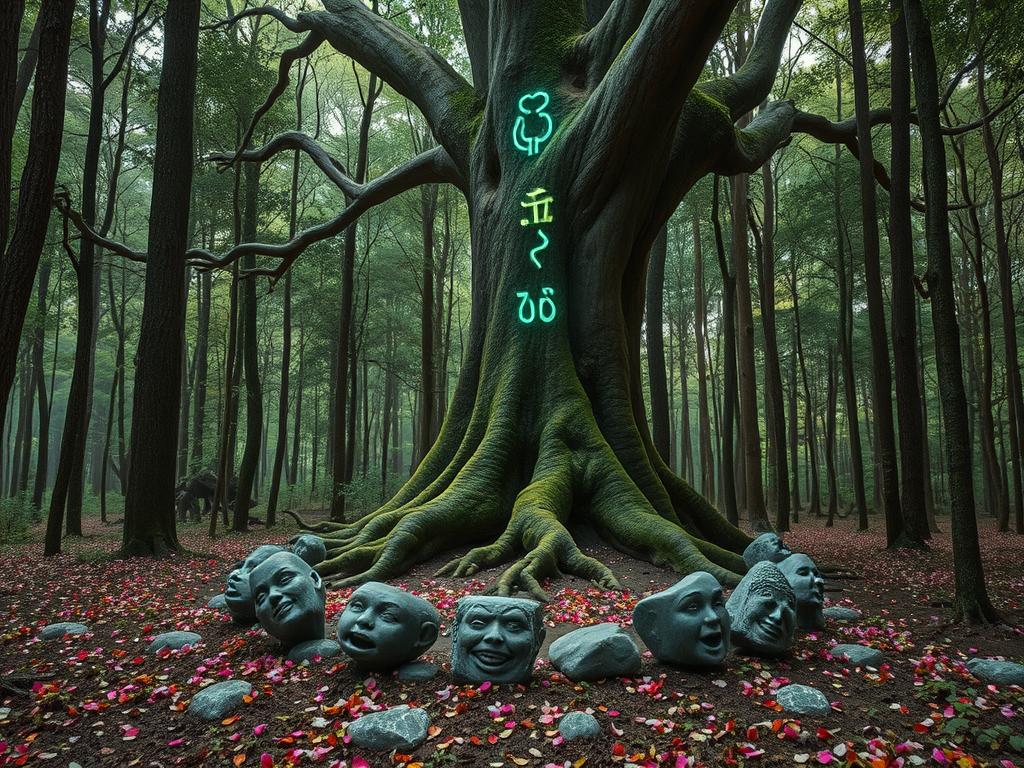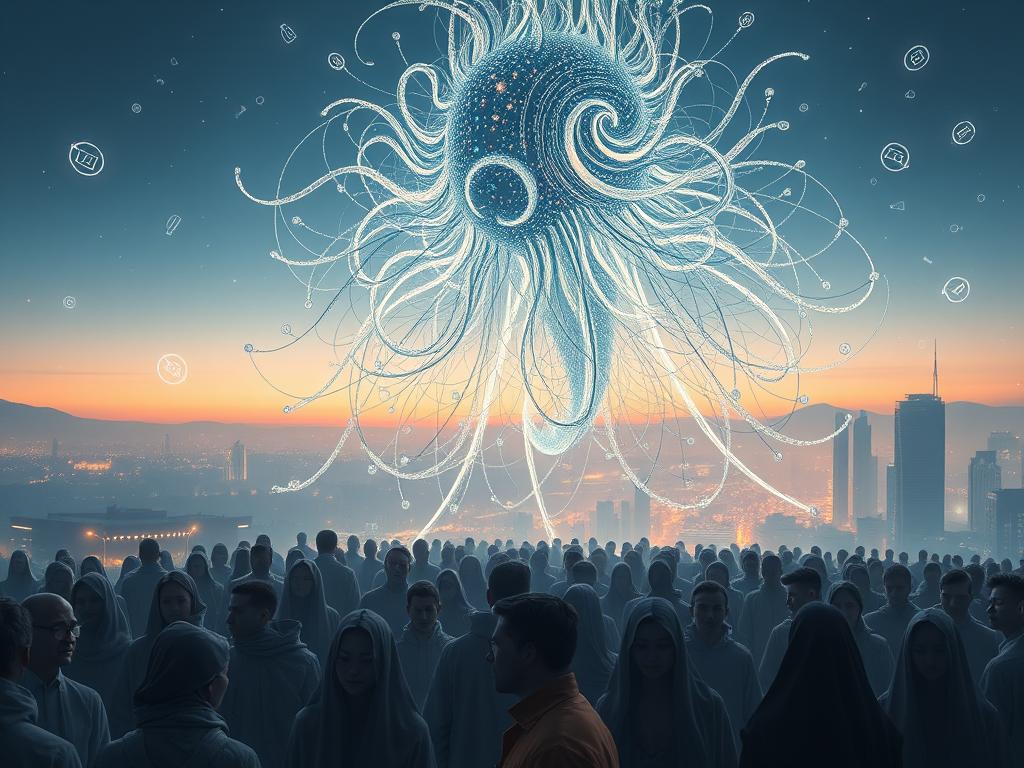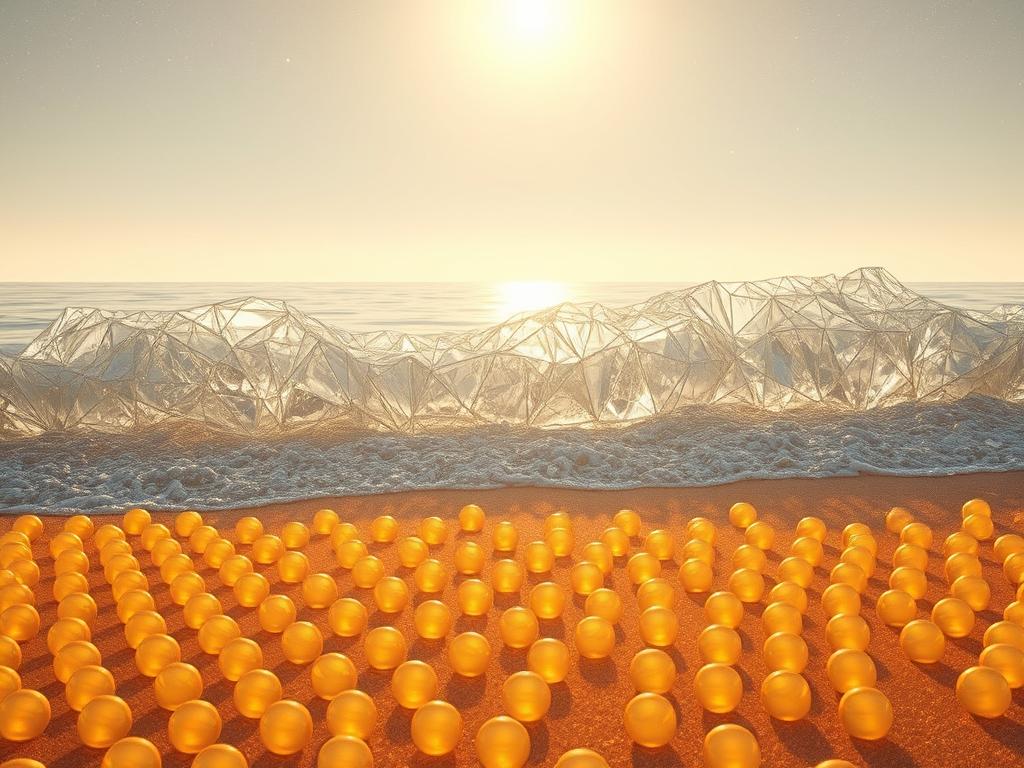Imagine A Shoreline At The Edge Of A Liquid Crystal Sea Where Waves Are Not Made Of Water But Of Shimmering
Imagine a shoreline at the edge of a liquid crystal sea, where waves are not made of water but of shimmering, glass-like structures that rise and fall in perfect geometric patterns. Each wave forms a temporary, intricate lattice of prisms and facets, catching the pale light of three distant stars. As they crest, these crystalline structures dissolve mid-air into a fine mist of glowing particles, leaving trails of faint, iridescent dust that drift upward before reassembling into new, kaleidoscopic shapes above the surface. On this surreal shore, the “sand” is a field of softly humming spheres that float just an inch above the ground, pulsing with warm amber light. Each step causes these spheres to arrange themselves into complex fractal patterns, like a silent, living symphony reacting to every movement. There is no sound except for the subtle resonance of shifting energy within the crystals, a low, harmonious hum that feels almost like the voice of the planet itself. Above, instead of clouds or stars, vast, slowly shifting geometric patterns stretch across the sky, forming grids and shapes that flicker and pulse with intelligence, as if the atmosphere itself is a living neural network. Occasionally, flashes of lightning pass through these grids, not as bolts, but as spiraling helixes of light that arc from one structure to another, linking them in sequences as if in communication. Here, the natural elements have no direct counterpart to anything on Earth, combining in a dance of structure and fluidity—an alien ecosystem of crystal and light, perpetually in motion yet perfectly still. This is a place that feels less like a landscape and more like an endless, complex equation, unfolding itself slowly to anyone who dares to observe.
08.11.2024 07:44
Related Images














